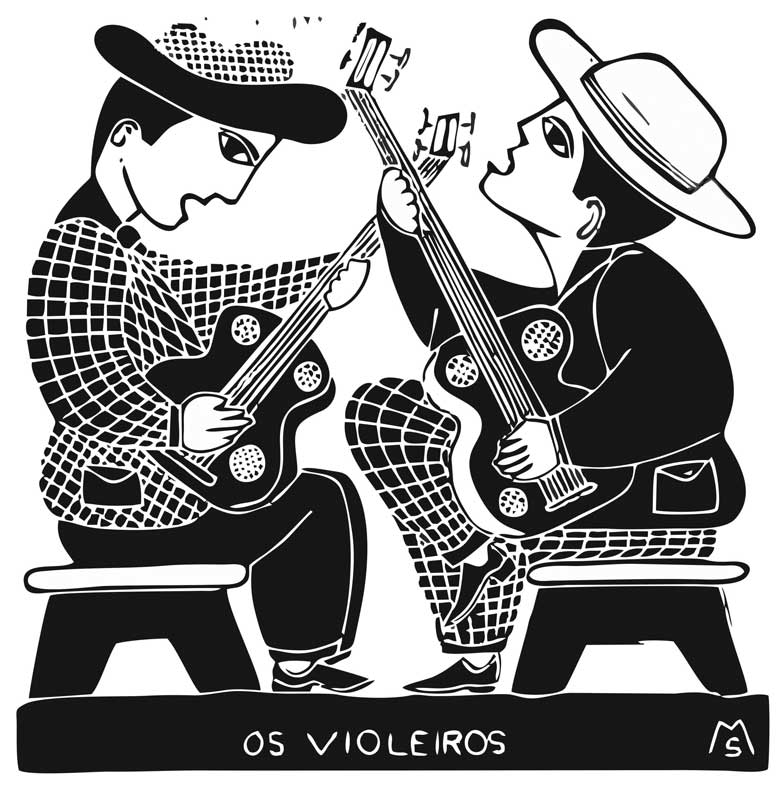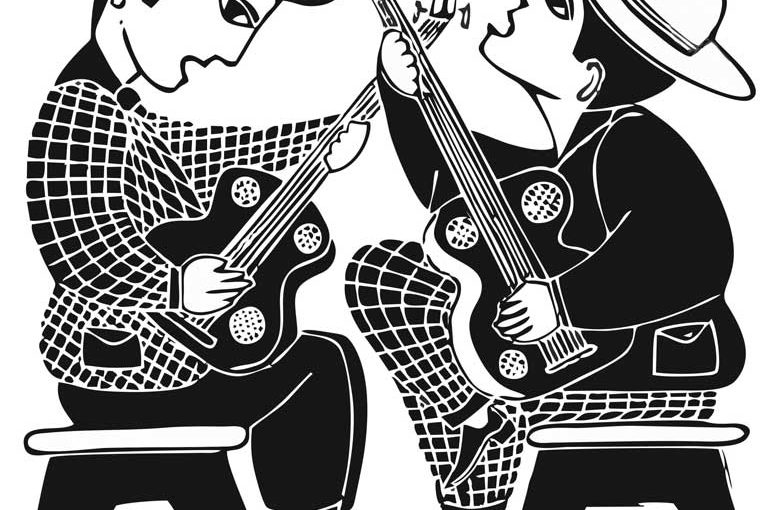Cordel literature is a popular literary expression characteristic of the Northeast. The verse-packed booklets to inform and entertain are illustrated with a handmade process and are the result of a tradition that is over a hundred years old.
Brought to Brazil by Portuguese colonizers, cordel literature is massively popular in the Northeast of the country -particularly in the states of Pernambuco , Paraíba , Rio Grande do Norte and Ceará – and combines a unique literary expression with an equally singular type of craft. These little books were traditionally displayed in street newsagents on a string (cordel), hence the name “cordel literature.”
The first cordel brochures found in Brazil appeared in the the nineteenth century and became popular in the Northeast due to the lack of reliable print media. The essence of cordel is its narrative verse-based structure about themes of relevance to the population, printed in small booklets in newsprint and intended to be read in public spaces. Covers are illustrated with the woodcut technique – a relief printing artistic technique in printmaking.
Verses in cordel books are built according to a vast repertoire of poetic forms that define the amount of syllables, verses and the arrangement of rhymes. A tradition in the oral communication started then and the reading of cordel – its readers, the “cordelistas” provided information and entertainment to people in the Northeastern countryside.
Fantasy themes such as “The bull that talked to the birds” by artisan Maxado, are common in cordel
“Life in the drylands”by J.Borges: Cordel also illustrates the daily life of the people from the Northeast.
The cordel craft technique
This is the description of how Jota Rodrigues, a cordel illustrator from the state of Pernambuco, develops the covers of the verse booklets as described by researcher Dinah Guimaraens:
The woodcut imagery [seen in cordel booklets) is carved up by [Jota] in wood with scissors, fishmonger knives or remains of knives. The impression of his woodcuts is made with an aluminum tablespoon, repeatedly and strongly pressed on the paper against the wood matrix that has previously received a layer of printing ink.
The simplicity of his graphic composition, the print flaws, the aesthetic of craft elements, which are made despite the lack of resources such as time, makes it a product that is marginal in a way, but also vivid and contemporary.

